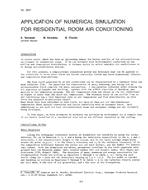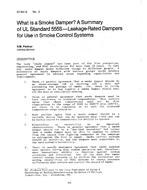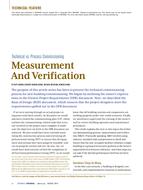This paper presents experimental results from the small-scale tests of the ASHRAE-1235 project on solar-driven vapor transport in wood frame walls. The objective of the tests is to produce precise measurements on wetting and drying behavior of internal parts of the back wall, when a wetted masonry cladding is loaded under cyclic temperature loading. The small-scale tests report wetting of the different wall components under constant and cyclic high temperature loading. It is found that, due to the temperature gradient, an important vapor flow is generated to the back wall, wetting the oriented-strand board (OSB) sheathing, mineral wool and gypsum board. The vapor permeance of the interior finishing determines the wetting of the gypsum board: a vapor tight vinyl wall covering leads to significant wetting of the gypsum board and very low drying rates during drying. A vapor open paint finishing reduces the moisture content of the gypsum board by a factor of 4 to 6. The magnitude of thermal loading determines the rate of wetting and drying. Hence, during cyclic loading, where the average thermal loading is lower than a constant high temperature loading, the wetting potential of the OSB and gypsum board reduces. With the lower thermal loading, the drying of the OSB and gypsum board is reduced which results in higher final moisture contents. The presence of a wood stud leads to lower moisture contents of the back wall for vinyl wall covering finishing, since the wood stud absorbs part of possible flow to the gypsum board. In the case of vapor open finishing, the hygroscopic behavior of the wood stud leads to higher moisture contents of the back wall.
Presented at Thermal Performance of Exterior Envelopes of Whole Buildings X – December 2007
Units: Dual
Citation: Thermal Performance of Exterior Envelopes of Whole Buildings X
Product Details
- Published:
- 2008
- Number of Pages:
- 9
- File Size:
- 1 file , 3.8 MB
- Product Code(s):
- D-BldgsX164


